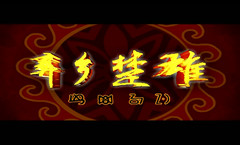The Torch Festival of Bai ethnic
By Huang Siyang and Ge Jieru ( chinadaily.com.cn )
Updated: 2015-08-03
Yunnan Province, having features of amazing landscape and diverse ethnic cultures, attracts hundreds of tourists every year. Various ethnic groups inhabited in Yunnan, makes it a colorful and mystique land of the world. Here, during summer, many ethnic groups celebrate the Torch Festival, but in different ways. Bai ethnic people, who lived for generations by the riverside of Erhai Lake in Dali, celebrate the Torch Festival on June 25 of the lunar calendar every year. It is the second biggest celebration among the Bai after the Spring Festival. It is also the time that people prepare excellent wine and delicious food for family reunion. Celebration remains a public one and Chinese parade combines some elements of torch performance. People dress up and get together at the center of the village or in front of the Benzhu temple. They wait to see the huge torch lit up. Meanwhile, old men play the ancient Dongjing music under an old tree, while old ladies recite the Scriptures together, offering their censer and stand in a line praying for the bless and good harvest for the next year. Before the celebration, retail festive sales boosts, special items such as small handmade buckets, small wooden torches and paper sachet have also got almost sold out.
People in each county and district erect a huge torch decorated with some representative sets. At the top of the torch, Bai people put a small paper umbrella in each side of it and a colorful flag with good wishes writing on it. This tradition is always a symbol of auspicious start for the future and the whole county. Traditional flags and colorful paper sachet are absolutely necessary, while different types of decorations developed across the flatland of Dali, depending on local traditions. In some areas, villagers hang some fruits like apples, pears and begonias in order to make a fruit torch, meaning good harvest of the next year. Before lighting the torch, elders offer sacrifice of grains and meat in a traditional way. As night falling down and every preparation are done, elders in the village bring fire from the Benzhu temple with the marching band and lit the huge torch. With the Dongjing music, men and women, old and young all dance around the torch with their best festival dresses. Flames lit the sky and people’s faces get delighted. Children also catch baked fruits of the torch which means bringing good fortune and luck to their homes. Young people play and dance with small torches on their hands and burn pine around the crowd to give them good wishes. Stars blink and the torch sparks, makes it the most romantic and carnival party of the year. The scene also creates a splendid picture of the flatland of Dali.
As far as origin of the festival is concerned, it dates back to the Tang Dynasty ( AD 618-907) in memory of Mrs Bai Jie, whose husband was a leader of a small country at that time. People admired Mrs Bai Jie because she was struggled to fight with the enemy and loyal to love. On June 25 of the lunar calendar nearly 1300 years ago, Pi Luoge, an ambitious leader hoping to unify the five small states then and building a new nation, intrigued against the other five leaders and invited them in Songming house to have a feast. Actually he had the intention to burn them alive so he could realize his ambition. Mrs Bai Jie had seen through Pi’s plot, and warned her husband not to go but her husband refused and commanded her to get prepared in case they need her help. During the subsequent banquet, Pi set fire to the Songming house. When Mrs Bai Jie led the troops to the house, it was too late, the bodies were burnt beyond recognition. The death of her husband threw her in deep sorrow; all she wanted was the corpse of her husband. So she lit a torch, and dug into the ruins looking for the corpse. With blood coming out from?all?her fingers, she found a body with a bracelet on an arm that was put by her before the feast. When she was still grieving her husband’s death, Pi found her. Deeply attracted by her beauty and wit, Pi wanted to marry her. Mrs Bai Jie would rather die than tying knot with her enemy, so she pretended to accept Pi’s proposal with the condition that she should mourn her husband at the side of Erhai Lake. But while mourning at the lake, along with the corpse of her husband, she jumped in aside it. It was a beautiful but heart-rending love story.
At the beginning of the feast, young ladies like to dye their nails into red in memory of the bravery of Mrs Bai Jie. At some counties, various other activities get conducted among young people, like horse and boat race. In tradition, Bai community, who does farming and grows rice for generations, uses torch to light fire to kill pest in the farming field and celebrate the good harvest. Along with all these, many records of the festival from scholars of ancient times also get preserved. Therefore, some people believe that the Torch Festival is a farming sacrificial rites based on the traditional culture of minorities. What is more interesting, the reproductive traditions contained in the festival, such as the torch should be made by a tree that was planted by the father of a boy; while the pit for putting the torch should be dug out by a girl’s father. Then they put a torch, filled with fruits symbolized families with many sons and grandsons and blessings. All make Torch Festival?an old celebration of Bai people originated from farming sacrificial rites and ancient reproductive traditions.
Edited by Shahnawaz Akhtar

